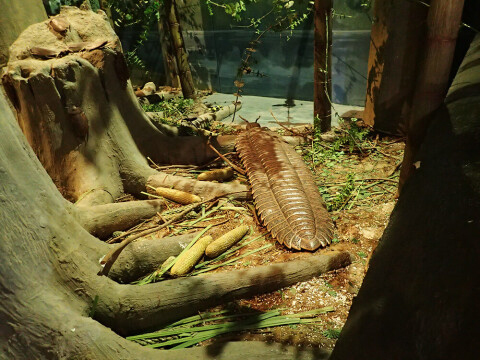Fossilised Trees go on Display at North Wales Museum
Return to the Carboniferous – take a trip to North Wales
The fossilised remains of gigantic tree-like plants are going on display at the Wrexham Museum as part of an exhibition entitled “From Coals to Carnations”. The prehistoric fossilised trees, some of which were upwards of 40 metres tall once formed part of a dense swampland in which huge insects and the first reptiles thrived.
Fossilised Trees
The fossilised trees were first uncovered during overcast mining works on the site of a former steel mill near Wrexham in 2003. The actual site is at the village of Brymbo, just a few miles to the north of Wrexham. The fossilised finds demonstrate that approximately 300 million years ago the land that was to eventually form Wales was much closer the equator than today and made up part of a super continent called Laurentia that covered much of the Western Hemisphere.
Geologists have been working on the site since its discovery, but work was accelerated from 2006 as the exposed fossils formed from mudstone, began to be weathered and there were some concerns about losing these rare fossils. More than 20 individual specimens have been identified, a number of which are going on display to the public for the first time at the Wrexham Museum. These ancient plants date back from before the time of the dinosaurs, and before flowering plants. They are the trunks of giant clubmosses like Lepidodendron. The scientific name for clubmosses are Lycopsids, a number of clubmoss genera still survive today, but they tend to be very small, no match for their huge ancestors.
A Carboniferous Forest Scene

A museum exhibit showing a typical Carboniferous habitat. Huge invertebrates such as Arthropleura roamed the forest floor.
Picture credit: Everything Dinosaur
Coal Deposits
As wood and other plant material was compressed and decayed it went onto form coal deposits. The Welsh coal fields took approximately 20 million years to form, since the Industrial Revolution about 200 years ago, most of these coal fields have been exhausted. A team of geologists helped oversee the preservation of the fossils, which had all been found at a site just 50 metres in length. This land is designated for new housing and light industry, but the developer Parkhill Estates, after discussions with local lobbyists decided that they wanted to try to preserve as many of the fossil specimens as possible.
The Wrexham Museum exhibition will provide visitors with a rare insight into the area’s prehistoric past.
To view replicas and figures of animals from the Palaeozoic and other extinct creatures: CollectA Prehistoric Life Replicas.

